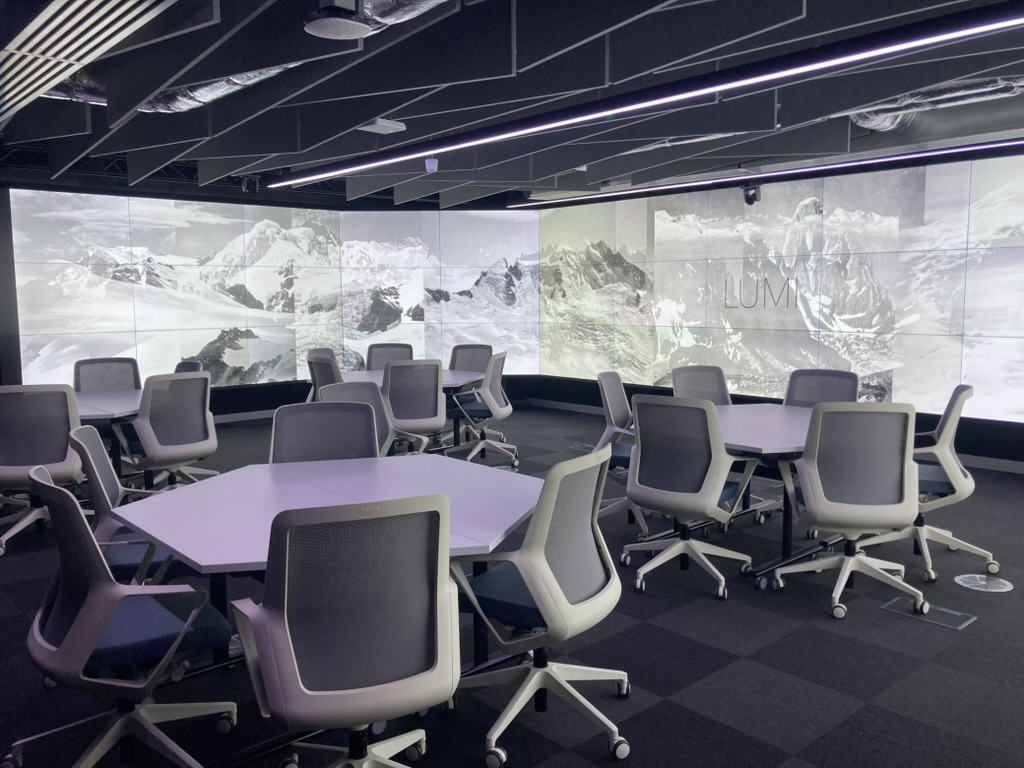Our Approach
Unsecurities Lab is designed specifically for specialist audiences, including researchers in science, technology, policy, and security practices, and aims to surface entangled forms of risk and adaptation that are often inaccessible to conventional analysis.
Each Lab follows a consistent process across three phases:
1. Immersive Encounter
Participants experience a selected artwork—typically an immersive film or generative environment. The artworks are chosen for their capacity to provoke thinking about uncertain, distributed, or emergent systems. Participants are not briefed in advance, to preserve the immediacy and effective complexity of the encounter.
2. Structured Dialogue
Following the viewing, participants engage in a facilitated discussion that surfaces threats, uncertainties, or conceptual openings raised by the artwork. These dialogues are shaped by prompt questions and thematic scaffolding (e.g. systems of sensing, accountability, ecological agency). Participants are encouraged to respond from their disciplinary positions while remaining open to cross-sector critique. The conversation is transcribed in full using AI-assisted tools and archived for further analysis.
3. Speculative Prototyping
In the final stage, participants use visual material from the artwork—stills, diagrams, language fragments—alongside their own disciplinary tools to develop speculative responses. These may include: counter-prompts, revised governance logics, roles for non-human actors, or conceptual repair strategies. These artefacts and notes become part of an evolving Planetary Threat-and-Repair Archive.
The method draws from artistic research, scenario planning, and post-disciplinary practice, using art to imagine groupings of specialism and ways of collaborating fit for future challenges.


